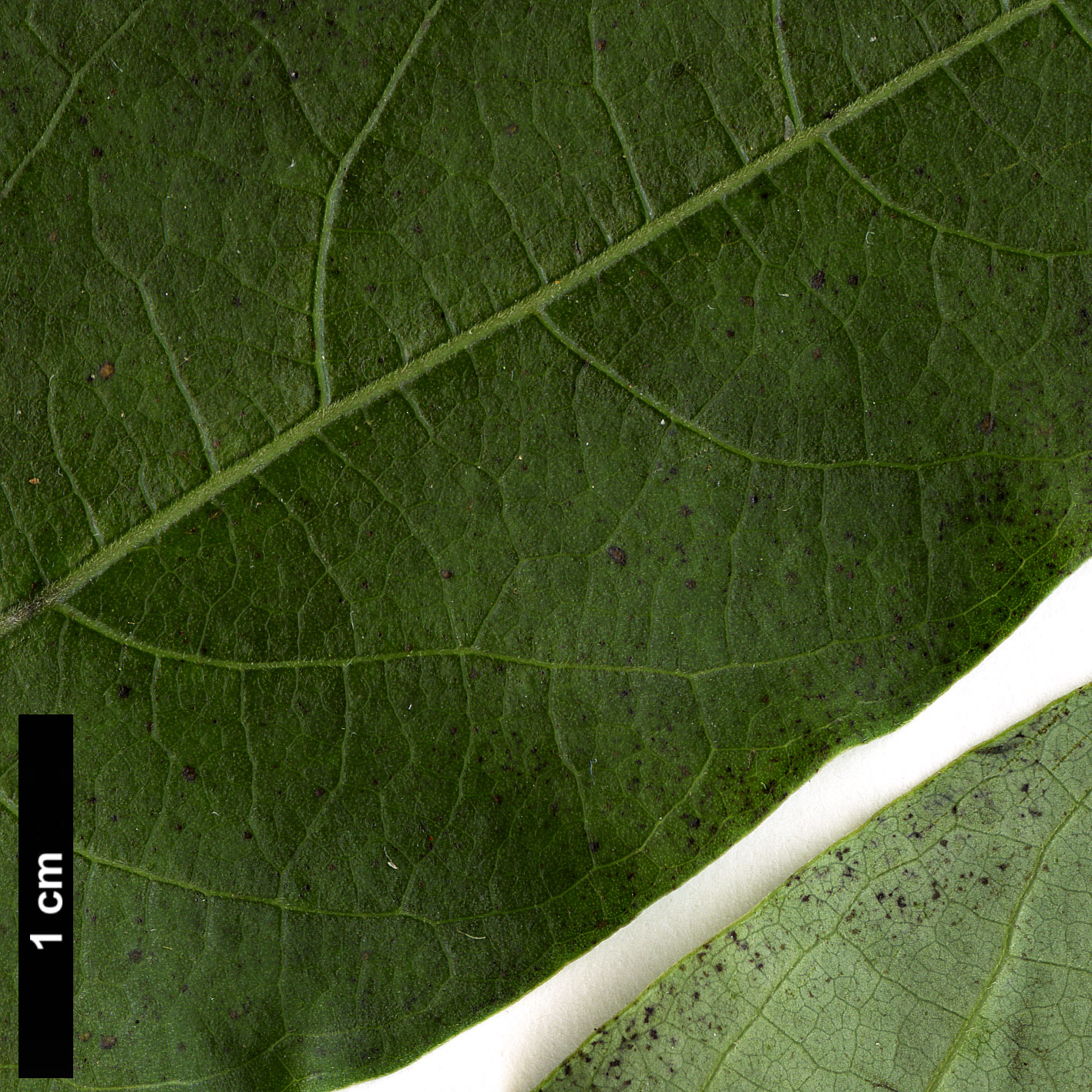Lindera metcalfiana
Sponsor
Kindly sponsored by
a member of the International Dendrology Society
Credits
Julian Sutton (2023)
Recommended citation
Sutton, J. (2023), 'Lindera metcalfiana' from the website Trees and Shrubs Online (treesandshrubsonline.
Genus
Infraspecifics
Other taxa in genus
- Lindera aggregata
- Lindera akoensis
- Lindera angustifolia
- Lindera assamica
- Lindera benzoin
- Lindera chienii
- Lindera communis
- Lindera erythrocarpa
- Lindera floribunda
- Lindera fragrans
- Lindera glauca
- Lindera megaphylla
- Lindera melissifolia
- Lindera neesiana
- Lindera obtusiloba
- Lindera praecox
- Lindera pulcherrima
- Lindera reflexa
- Lindera rubronervia
- Lindera sericea
- Lindera tonkinensis
- Lindera triloba
- Lindera umbellata
Deciduous shrub or tree to 12 m. Bark dark grey or brownish. Young branchlets brown or grey, slender, with some yellowish hairs at first. Terminal buds small (~3 mm), conical, with dense yellow-brown silky hairs. Leaves pinnately veined, with 5–10 pairs of lateral veins; blade membranous (more leathery in var. dictyophylla), elliptic (lanceolate in var. dictyophylla), 5–13 × 2–4.5 cm, with yellow-brown hairs on the veins of both surfaces at least initially; base broadly cuneate; margin entire; apex long-acuminate to caudate, usually falcate (acuminate, not falcate in var. dictyophylla); petiole 0.5–1 cm, yellow-brown-pubescent. Umbels in groups of 1–3, axillary on short branchlets, each umbel with 4 involucral bracts and 4–8 flowers. Flowers yellow, tepals 6; male flowers with 9 fertile stamens; female flowers with nine staminodes and a peltate stigma. Fruit globose, purple-black at maturity, ~0.6 cm across. Flowering March–May, fruiting June–October (China). (Cui & van der Werff 2008).
Distribution China Fujian, Guangdong, Guangxi, Hainan, Yunnan
Habitat Evergreen broad-leaved forests and margins, roadsides, mountain slopes; 1200–2000 m asl.
USDA Hardiness Zone 8
RHS Hardiness Rating H3
Conservation status Least concern (LC)
This southeastern Chinese species is represented in cultivation only by var. dictyophylla (see below). Still recently introduced and little known, the hardiness ratings above are little more than guesswork.
Lindera metcalfiana belongs to the informal group of species with pinnately veined deciduous leaves. It stands out among those we describe for having numbers of umbels clustered below the apex of short axillary branches; in the others an umbel is inserted either side of an apical or axillary bud, or as part of a mixed bud (Cui & van der Werff 2008). The overall effect is of quite a densely-flowered shoot by the modest standards of Lindera (Chinese Academy of Sciences 2023). Allen’s (1941) specific epithet commemorates the Hong Kong based American botanist Franklin Metcalf.
var. dictyophylla (C.K. Allen) H.P. Tsui
Synonyms
Lindera dictyophylla C.K. Allen
Leaf blade lanceolate, thinly leathery or leathery, lateral veins 5–8 pairs, apex acuminate, not falcate (Cui & van der Werff 2008).
Distribution
- China – Fujian, Guangxi, Yunnan
- Vietnam – N
This typically narrower, more leathery leaved variant extends south into Vietnam, although it was first described (as a full species – Allen 1941) from a series of specimens collected only in Yunnan. It is in European gardens under KWJ 12312 (N Vietnam 2007), a seed collection from a 4 m tree growing in a small forest clearing beside a stream (Crûg Farm Plants 2013). The collectors mention small, black, glossy fruit ‘all along the branches’. Blackhall-Miles (2014) also singles out fruit as the main ornamental feature of an otherwise ‘demure’ plant, likening them to ‘shining beads held on bare green stems’. It has been distributed at least in Europe by Crûg Farm Plants, UK, who recommend full sun to light shade, in moisture-retentive soil (Crûg Farm Plants 2023). Commercial collections of this sort tend not to end up in today’s botanic gardens. The Tree Register (2023) records a young specimen at Wynkcoombe Hill Arboretum, Sussex, UK.





